
Walter Hammond Righter (1905 - 1982)An Illustrated Biography by his daughter, Frances Jean Righter Tucker © 2005
Chapter 5. Test CarsLast Updated : July 23, 2005
The first car was a 1929 La Salle Sedan to which Dad attached a custom frame to the side of the car to mount the drones. The frame was set up to allow the drones to to move up and down about a foot and to move to the rear without any restriction at all. The test process involved getting the car up to flying speed, 'trimming' the drone till it was aerodynamically stable then dismounting the drone from the frame, place it on the launcher and then test it under free flight.
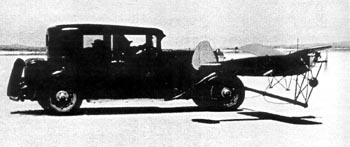 La Salle Sedan 'trimming' the RP-4 / OQ-1, 1939 Walter Righter is driving his car with Reg Denny in the back seat. Photo : Righter Family Archives - Click Image to Enlarge
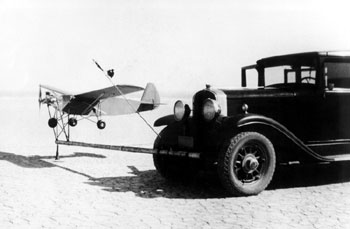 RP-4 / OQ-1 and the La Salle Photo: Righter Family Archives - Click Image to Enlarge Download a 1500 pixel image
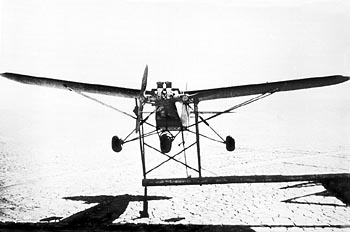 RP-4 / OQ-1 mounted on 'trimming' frame Photo : Righter Family Archives - Click Image to Enlarge Download a 1500 pixel image
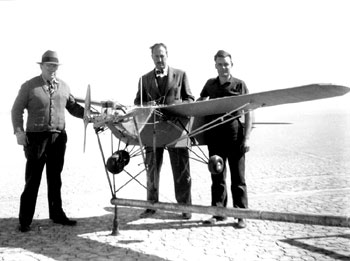 Walter Righter, Reginald Powell and Kenneth Case Photo: Righter Family Archives - Click Image to Enlarge
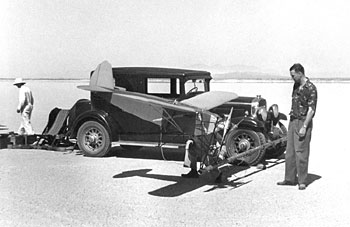 RP-4 / OQ-1 and the La Salle On the right : Paul Whittier Photo: Denny Family Archives - Click Image to Enlarge Download a 1500 pixel image
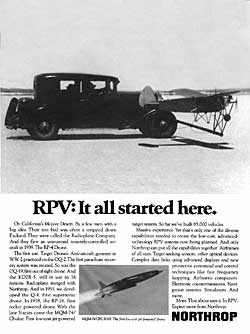 RPV : It All Started Here Airforce Magazine Feb., 1973 Photo: Righter Family Archives - Click Image to Enlarge
This time he removed the whole rear body and the two little jump seats out of the back seat were fitted beside the drivers seat. They ruined a perfectly good limo, but "it had performance you wouldn't believe!" Dad said. Now the drones could be tested at about 95 miles per hour. When Dad bought the Packard we all loved it. Between the front and back seats was a glass window; the center section could be slid open or closed. You could speak to the chauffeur that way or via a speaker. My sister Cathie and I had a grand time giving orders to "our chauffeur" and pretending we were someone special. The back seat area was spacious with the two extra folding seats between the front and back seats. We had such fun with it before it was stripped down. We all hated to see such a wonderful vehicle destroyed like that. All these tests were run at Muroc Dry Lake now "Rogers" Dry Lake and part of the Edwards Air force Base. When Dad sold Righter Engineering to Radioplane "with gladness and sadness", the test cars went with it.
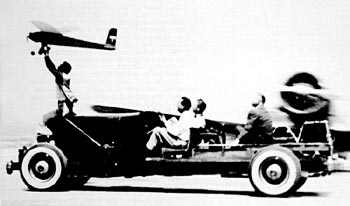 Unrecognised aircraft and the Packard
Botzum, Richard A., 50 Years of Target Drone Aircraft, Northrop Corp., 1985
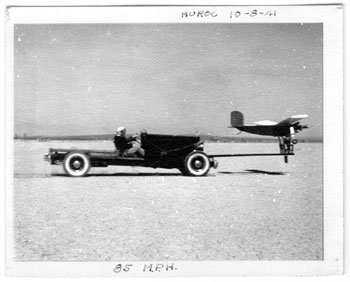 RP-4 / OQ-1 and the Packard (original photograph) Photo: Righter Family Archives - Click Image to Enlarge Download a 1500 pixel image
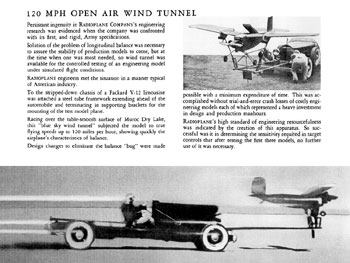 RP-4 / OQ-1 and the test cars : a formal report Photo: Righter Family Archives - Click Image to Enlarge Download a 1500 pixel image
|
© Copyright 1999-2005 CTIE - All Rights Reserved - Caution |